
When it comes to Nike Air Jordan sizing, things can get confusing fast.
Everyone has an opinion. Some say go true to size, others swear by going half up or half down. And honestly, I get it.
Every model feels a little different, and figuring out the right fit can be tricky, especially if you’re buying online or trying the brand for the first time.
I’ve spent a lot of time trying on Jordans, comparing fits between models, and digging through what real wearers say about each one.
The truth is, not all Jordans fit the same. Some run a little snug in the toe, some feel roomy around the midfoot, and some break in beautifully after a few wears.
In this guide, I’ll walk you through:
- How Air Jordans generally fit.
- How each model fits based on real experience, from the classics like the Air Jordan 1 to the newest releases like the Air Jordan 40.
- How to measure your feet properly.
You’ll also find a quick reference table below so you can jump straight to the model you care about.
Before we start, if you’re curious about how other Nike sneakers fit, you can also read my full Nike Air Max sizing and size chart guide.
Let’s dive right into it…
Nike Air Jordan Sizing Guide
From my experience, most Air Jordans fit true to size. The overall shape is usually a little snug at first, especially around the midfoot, but they tend to break in nicely after a few wears.
You’ll notice that the older models like the Air Jordan 1 feel more structured and narrow, while the newer ones (like the 38s or 39s) use lighter and more flexible materials that adjust better to your foot.
That said, every model has its quirks. Some run longer, some feel tighter in the toe box, and others stretch a bit with time.
So if you want the full picture, it’s worth checking the details for each model below.
Now, if you’re looking for a quick overview of how each Air Jordan fits, below is a handy table for easy reference. You can quickly see whether a model runs true to size, a little big, or if there’s something specific to watch out for.
To find your model fast, hit Ctrl + F on Windows or Command + F on Mac and type in the model name.
If you want more details or you notice in the table that a model has a note about something like extra length, tightness, or even that infamous pinky toe rubbing, scroll right below the table.
There, you’ll get all the extra info you need so you understand exactly why that particular model fits the way it does and what you can do about it.
| Model | How it fits | Quick tip | ||||
| Air Jordan 1 | True to size | Get usual AJ1 size. | ||||
| AJ 1 High 85 | Runs a touch large | Go down 1/2 for one-to-one fit. True if using thick insoles. |
||||
| AJ1 High OG | True to size | Get usual AJ1 size. | ||||
| AJ1 Low OG | True to size | Some OG Lows feel roomier at the heel. |
||||
| AJ 1 Mid/SE | True to size | Cheaper Mids need more break-in. | ||||
| Air Jordan 2 | True to size | Narrow feet try down 1/2. Wide sole gives extra room. |
||||
| Air Jordan 2/3 | True to size or up 1/2 | True if narrow. up 1/2 if feet swell or wide feet. |
||||
| AJ 2 Low | True to size | Expect short break-in. | ||||
| Air Jordan 3 | True to size | Wide footers may prefer up 1/2 due to collar padding. |
||||
| AJ 3 OG | True to size | Same classic fit. | ||||
| Air Jordan 4 OG | True to size | Get regular AJ4 size. | ||||
| Air Jordan 5 | True to size | Down 1/2 for snug fit. Wide footers go true to size. |
||||
| AJ 5 Medium | True to size | Down 1/2 to reduce creasing and get a tighter look. |
||||
| AJ 5 Reimagined | True to size | Better than some newer AJ5s. | ||||
| AJ 5 OG | True to size | True size for most. Down 1/2 for a very snug fit. |
||||
| Air Jordan 6 | True to size | Extra toe volume. Narrow try down 1/2. |
||||
| Air Jordan 7 | True to size | True size for wide feet. Down 1/2 for extra lockdown. |
||||
| Air Jordan 8 | True to size | Down 1/2 for extra tightness. | ||||
| AJ 8 Winterized | True to size | True for thick socks. Down 1/2 for a close fit. |
||||
| Air Jordan 9 | True to size | Pinky toe rubbing. Most people go up 1/2 to avoid it. |
||||
| Air Jordan 10 | Runs a bit long | Down 1/2 if narrow. True size for wide feet. |
||||
| Air Jordan 11 | True to size | Wide footers may prefer up 1/2. | ||||
| AJ 11 Low | True to size | Get usual AJ11 size. | ||||
| Air Jordan 12 | True to size | Down 1/2 for a very snug fit. | ||||
| Air Jordan 13 | True to size | True for casual wear. Down 1/2 for a tighter, play fit. |
||||
| Air Jordan 14 | True to size | Heel/back can dig in. Expect a break-in period. |
||||
| AJ 14 Ferrari | True to size | Some go up 1/2 to avoid heel pressure. True size fits best after break-in. |
||||
| AJ 17 Low/UNC | True to size | True for casual wear. Down 1/2 if you plan to play. |
||||
| Air Jordan 38 | True to size | Fits one-to-one. | ||||
| AJ 38 Low | Runs longer | Down 1/2 unless you have wide feet or wear braces. |
||||
| Air Jordan 39 | True to size | Slight stretch with wear. Wide feet try in store. |
||||
| Air Jordan 40 | Runs snug | Consider up 1/2 for most people. Tight toe & heel can cause pressure. |
||||
If you’re not sure how Nike Air Jordan sizing compares to regular Nike shoes, I really recommend checking out my full Nike sizing guide. It breaks down how Nike shoes generally fit, how they compare across different models, and what to expect if you’re switching from another brand.
Nike Vomero Size Chart
| Men's US | Women's US | UK | EU | Inches | CM |
|---|---|---|---|---|---|
| 3.5 | 5 | 3 | 35.5 | 8 1/2 | 21.6 |
| 4 | 5.5 | 3.5 | 36 | 8 2/3 | 22 |
| 4.5 | 6 | 4 | 36.5 | 8 4/5 | 22.4 |
| 5 | 6.5 | 4.5 | 37.5 | 9 | 22.9 |
| 5.5 | 7 | 5 | 38 | 9 1/5 | 23.3 |
| 6 | 7.5 | 5.5 | 38.5 | 9 1/3 | 23.7 |
| 6.5 | 8 | 6 | 39 | 9 1/2 | 24.1 |
| 7 | 8.5 | 6 | 40 | 9 2/3 | 24.5 |
| 7.5 | 9 | 6.5 | 40.5 | 9 4/5 | 25 |
| 8 | 9.5 | 7 | 41 | 10 | 25.4 |
| 8.5 | 10 | 7.5 | 42 | 10 1/5 | 25.8 |
| 9 | 10.5 | 8 | 42.5 | 10 1/3 | 26.2 |
| 9.5 | 11 | 8.5 | 43 | 10 1/2 | 26.7 |
| 10 | 11.5 | 9 | 44 | 10 2/3 | 27.1 |
| 10.5 | 12 | 9.5 | 44.5 | 10 4/5 | 27.5 |
| 11 | 12.5 | 10 | 45 | 11 | 27.9 |
| 11.5 | 13 | 10.5 | 45.5 | 11 1/5 | 28.3 |
| 12 | 13.5 | 11 | 46 | 11 1/3 | 28.8 |
| 12.5 | 14 | 11.5 | 47 | 11 1/2 | 29.2 |
| 13 | 14.5 | 12 | 47.5 | 11 2/3 | 29.6 |
| 13.5 | 15 | 12.5 | 48 | 11 4/5 | 30 |
| 14 | 15.5 | 13 | 48.5 | 12 | 30.5 |
| 14.5 | 16 | 13.5 | 49 | 12 1/5 | 30.9 |
| 15 | 16.5 | 14 | 49.5 | 12 1/3 | 31.3 |
| 15.5 | 17 | 14.5 | 50 | 12 1/2 | 31.7 |
| 16 | 17.5 | 15 | 50.5 | 12 2/3 | 32.2 |
| 16.5 | 18 | 15.5 | 51 | 12 4/5 | 32.6 |
| 17 | 18.5 | 16 | 51.5 | 13 | 33 |
| 17.5 | 19 | 16.5 | 52 | 13 1/5 | 33.4 |
| 18 | 19.5 | 17 | 52.5 | 13 1/3 | 33.9 |
| 18.5 | 20 | 17.5 | 53 | 13 1/2 | 34.3 |
| 19 | 20.5 | 18 | 53.5 | 13 2/3 | 34.7 |
| 19.5 | 21 | 18.5 | 54 | 13 4/5 | 35.1 |
| 20 | 21.5 | 19 | 54.5 | 14 | 35.5 |
| 20.5 | 22 | 19.5 | 55 | 14 1/5 | 36 |
| 21 | 22.5 | 20 | 55.5 | 14 1/3 | 36.4 |
| 21.5 | 23 | 20.5 | 56 | 14 1/2 | 36.8 |
| 22 | 23.5 | 21 | 56.5 | 14 2/3 | 37.2 |
Big Kids (1Y – 7Y)
| Foot Length (in) | US | Foot Length (cm) | UK | EU |
|---|---|---|---|---|
| 7 15/16 | 1Y | 20.1 | 13.5 | 32 |
| 8 1/16 | 1.5Y | 20.5 | 1 | 33 |
| 8 4/16 | 2Y | 20.9 | 1.5 | 33.5 |
| 8 7/16 | 2.5Y | 21.4 | 2 | 34 |
| 8 9/16 | 3Y | 21.8 | 2.5 | 35 |
| 8 12/16 | 3.5Y | 22.2 | 3 | 35.5 |
| 8 13/16 | 4Y | 22.4 | 3.5 | 36 |
| 8 15/16 | 4.5Y | 22.7 | 4 | 36.5 |
| 9 2/16 | 5Y | 23.2 | 4.5 | 37 |
| 9 4/16 | 5.5Y | 23.5 | 5 | 38 |
| 9 6/16 | 6Y | 23.8 | 5.5 | 38.5 |
| 9 9/16 | 6.5Y | 24.3 | 6 | 39 |
| 9 11/16 | 7Y | 24.6 | 6 | 40 |
Related: Check our latest article on LeBron sizing.
Little Kids (8C – 3Y)
| Foot Length (in) | Foot Length (cm) | US | UK | EU |
|---|---|---|---|---|
| 5 15/16 | 15 | 8C | 7.5 | 25 |
| 6 4/16 | 15.9 | 9C | 8.5 | 26 |
| 6 9/16 | 16.7 | 10C | 9.5 | 27 |
| 6 12/16 | 17.2 | 10.5C | 10 | 27.5 |
| 6 15/16 | 17.6 | 11C | 10.5 | 28 |
| 7 1/16 | 18 | 11.5C | 11 | 28.5 |
| 7 4/16 | 18.4 | 12C | 11.5 | 29.5 |
| 7 7/16 | 18.8 | 12.5C | 12 | 30 |
| 7 9/16 | 19.3 | 13C | 12.5 | 31 |
| 7 12/16 | 19.7 | 13.5C | 13 | 31.5 |
| 7 15/16 | 20.1 | 1Y | 13.5 | 32 |
| 8 1/16 | 20.5 | 1.5Y | 1 | 33 |
| 8 4/16 | 20.9 | 2Y | 1.5 | 33.5 |
| 8 7/16 | 21.4 | 2.5Y | 2 | 34 |
| 8 9/16 | 21.8 | 3Y | 2.5 | 35 |
Related: Kobe Sizing Guide
Babies & Toddlers (1C – 10C)
| Age (months) | US | UK | EU | Foot Length (in) | Foot Length (cm) |
|---|---|---|---|---|---|
| 3 | 1C | 0.5 | 16 | 3 9/16 | 9.1 |
| 6 | 2C | 1.5 | 17 | 3 15/16 | 10 |
| 9 | 3C | 2.5 | 18.5 | 4 4/16 | 10.8 |
| 12 | 4C | 3.5 | 19.5 | 4 9/16 | 11.6 |
| 18 | 5C | 4.5 | 21 | 4 15/16 | 12.5 |
| 24 | 6C | 5.5 | 22 | 5 4/16 | 13.3 |
| 36 | 7C | 6.5 | 23.5 | 5 9/16 | 14.2 |
| 8C | 7.5 | 25 | 5 15/16 | 15 | |
| 9C | 8.5 | 26 | 6 4/16 | 15.9 | |
| 10C | 9.5 | 27 | 6 9/16 | 16.7 |
Related: If you want to compare with another classic, see our Nike Dunk sizing guide to find your ideal fit.
Air Jordan 1

The Air Jordan 1 fits true to size. If you usually wear a size 42, then grab a 42. No need to size up or down. I’ve tried several pairs over the years, and every time, the sizing stays consistent.
The shape, though, is where things get interesting. The current AJ1 feels like a mix between the newer releases and the 1985 version.
It’s got that straighter heel line from the 1985 cut but still has the forward-leaning stance from the modern pairs.
I’m not sure why they didn’t just pick one, but honestly, it works. The good news is that the fit stays true to size, just like any other AJ1.
If you’ve never owned a pair of Air Jordan 1s, I’d still recommend trying one on in a local store before buying. The shape is unique, and you might want to make sure your foot feels right in it.
Related: If you’re also comparing Jordans to other brands, I recommend reading my Adidas sneaker fit guide, so you’ll know exactly what to expect if you switch between the two brands.
Air Jordan 1 High 85

The Air Jordan 1 High 85 is a bit different. Nike changed a few things here, especially with the insole and the overall construction.
Because of that, they don’t feel quite the same as the other 85 releases.
You could go true to size if you plan to wear thicker insoles or orthotics, but I’d actually suggest going down half a size.
That’ll give you a snug, one-to-one fit, and they’ll break in better over time. Once they soften up, that tighter fit really pays off. It feels more natural and easier to wear for longer periods.
Related: You can also take a look at my Nike Air Force 1 sizing and size chart guide. It’s super helpful if you’re trying to figure out how Air Force 1s compare to Air Jordans in terms of fit, width, and overall feel, especially since Air Force 1s are known to run a bit bigger.
Air Jordan 1 High OG
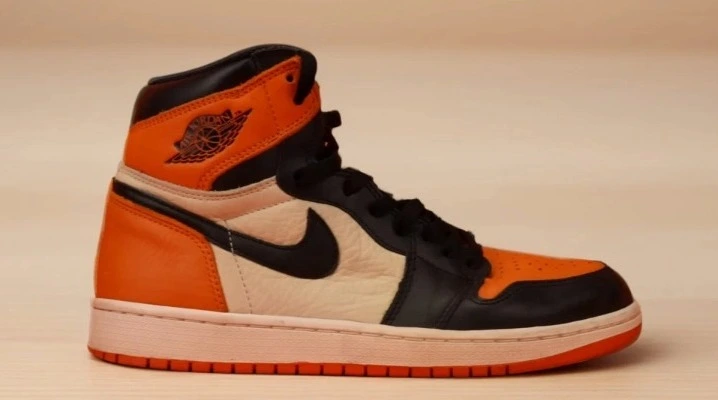
The High OG keeps things simple. It fits true to size. Whatever you normally wear in your Air Jordan 1s, stick with it.
Air Jordan 1 Low OG

The Air Jordan 1 Low OG fits slightly differently than the standard Air Jordan 1 Lows. When I went up half a size, I could feel the extra room around my heel, so I’d definitely recommend sticking with your true size.
If you already own other Low OGs, you’ll notice they all fit pretty similarly, just a touch different from the non-OG Lows.
The OG has the Wings logo on the back and a slightly different shape compared to the standard Lows that have a more slanted heel. Overall, the Low OG fits true to size for most people, and if you’re between sizes, go for the smaller one.
Related: Thursday lean more toward casual or dress sneaker sizing, with a slightly slimmer shape and a closer fit overall. If you want to see how they compare, check out my full Thursday sneaker sizing guide. It’s a great reference if you switch between lifestyle sneakers and performance-style shoes like Jordans.
Air Jordan 1 Mid & Air Jordan 1 Mid SE

The Mids and Mid SE versions both fit true to size. Whatever you wear in your AJ1s, that’s exactly what I’d recommend.
The only difference you might notice is in the materials. The cheaper Mids have stiffer leather that needs a bit of breaking in, while the pricier SE models use softer leather that feels good right out of the box.
So, if your pair feels a little stiff at first, they’ll loosen up after a few wears. Once they do, you’ll get that same familiar AJ1 comfort everyone talks about.
Related: If you ever wear running shoes or switch between lifestyle and performance sneakers, you might also want to read my Asics sneaker fit guide. It explains how Asics sneakers fit compared to Nike and Air Jordans, especially when it comes to length, width, and overall feel underfoot.
Air Jordan 2
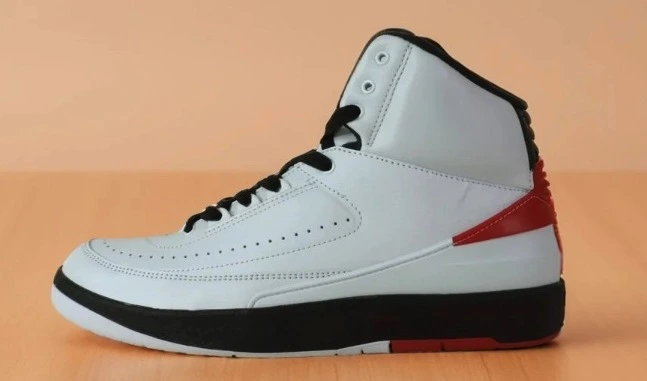
The Air Jordan 2 fits true to size, plain and simple. Whatever you usually wear, that’s exactly what I’d order here.
The fit feels balanced, not too tight, not too roomy, and the shape stays close to the classic design.
Now, one thing you’ll notice right away is that the sole is pretty wide. So, if you’ve got narrow feet, you could size down half a size for a snugger feel. It’s not something most people need to do, but it’s an option if you find your usual size a bit roomy.
The upper doesn’t have a ton of padding, except around the collar area where you see that lizard-print section. Because of that, if your size happens to be sold out, going down half a size would still work fine. It won’t crush your toes or anything like that.
So, the good news is you can confidently go true to size here, just like with most modern AJ2 releases. Still, if you have a store nearby, it never hurts to try them on first to make sure you’re grabbing the right fit for your foot shape.
Related: If you’re into casual sneakers, you might also want to check out my Vans fit guide. Vans tend to have a flatter sole, a narrower shape, and a different kind of break-in, so it’s good to know what to expect before picking a size.
Air Jordan 2/3

This hybrid pair sits right between the 2 and 3 in terms of construction and fit. You’ve got two solid choices here:
You can stay true to size if you’ve got narrow feet, and it’ll feel just right. But if your feet tend to swell during the day or you’ve got a wider foot, consider going up half a size.
There’s a small area inside the shoe where multiple stitching layers overlap, which can create a pressure point after long wear or basketball sessions.
I noticed that when my feet started to swell, that spot became noticeable. Going up half a size helped relieve that completely.
For me, true to size worked fine in most pairs, but that tiny bit of extra space made a difference when I played in them for hours. Lengthwise, true to size feels perfect. Just keep that inner stitching spot in mind.
Oh, and if you want more tips on avoiding pressure points and getting the best fit for performance, check out my guide on how basketball shoes should fit.
Air Jordan 2 Low
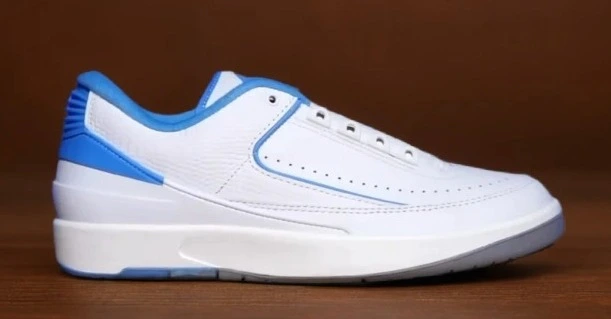
The Air Jordan 2 Low fits true to size, too. Slip into your usual size and you’ll be good.
Compared to the standard Air Jordan 2, these feel a bit less cushioned, especially when you line them up next to something like the Chicago colorway. That one feels more plush and bouncy, while the Low starts off a little stiffer.
Give them some time, though. They’ll soften up as you break them in. Once they do, they start to feel more natural underfoot. So, go with your true size, and expect a short break-in period before they really start feeling great.
Related: If you also wear modern Nike runners, I wrote a full Nike Vapormax fit guide that explains how that lineup fits compared to Jordans.
Air Jordan 3
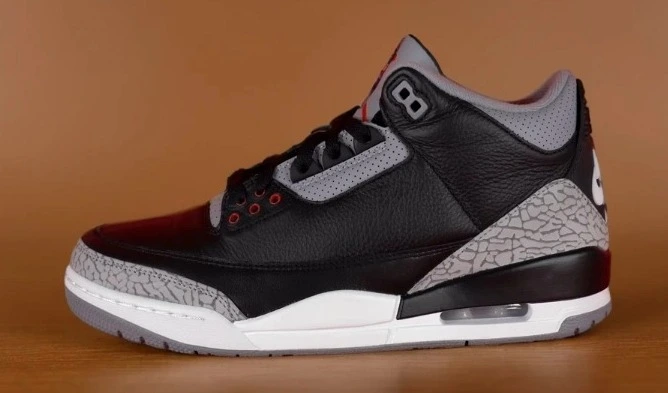
The Air Jordan 3 fits true to size. Whatever you usually wear in your AJ3s, that’s exactly what I’d recommend.
The overall fit feels classic and consistent with older releases. If you’ve owned a pair before, you’ll know what to expect right away.
That said, the Air Jordan 3 does have a bit of extra padding around the collar. If you’ve got wide feet, you might want to consider going up half a size for a little more breathing room.
That padding can make the fit feel a bit snug at first, but once the shoe breaks in, it settles nicely.
Related: If you want to avoid sizing mistakes, my article on how Huaraches run breaks down what to expect for narrow, normal, and wide feet.
Air Jordan 3 OG

The Air Jordan 3 OG keeps that same true-to-size fit. Nothing’s changed here, and that’s a good thing. The OG 3s still feel like the 3s you know, so if you already know your Air Jordan 3 size, stick with it.
If you’ve never owned a pair, it’s worth trying one on in-store before buying online, just to be sure. The shape can feel a bit different if you’re coming from a sleeker Jordan model like the AJ1, but once you get used to the bulkier silhouette, it feels solid.
Related: For a Nike model with a completely different feel, you can check how Foamposites fit and mold to your foot.
Air Jordan 4 OG
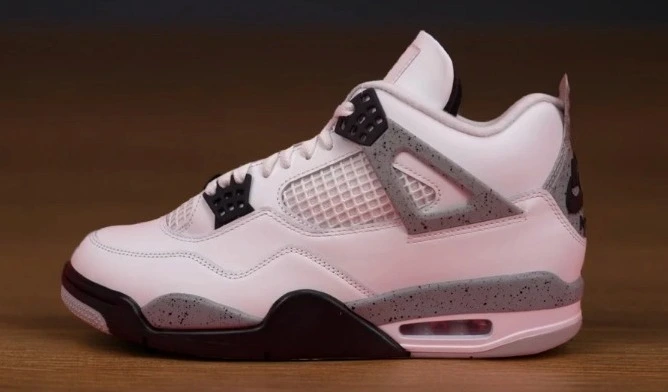
The Air Jordan 4 OG fits true to size. Whatever you normally wear in your 4s, go with that. I went true to size and they felt perfect. There was no pinching and no heel slip.
Air Jordan 4 Rare Air
The Rare Air version fits the same way as the standard Air Jordan 4. If you’ve owned any other AJ4s, you already know how these will feel. Go true to size and you’ll be fine.
The structure and build haven’t changed much, so if you liked how past 4s fit, this one won’t surprise you. The only differences are cosmetic details, not the fit.
Air Jordan 5

Now, here’s where things get a little more personal. The Air Jordan 5 generally fits true to size, but you’ve got some room to play depending on what kind of fit you like.
If you want a regular, comfortable fit, go true to size. Most people will be perfectly happy with that. But if you prefer that snug, one-to-one feel, you can go down half a size, especially if you’ve got narrow feet.
The materials on the 5s are usually soft enough to break in quickly, so even if they feel tight at first, they’ll loosen up with wear. Wide footers, though, should definitely stick with their regular size.
Air Jordan 5 Medium
For the Medium version, you can also go true to size and be fine. But if you want that tighter, cleaner fit, the kind that helps the shoe crease less, go down half a size.
These tend to crease faster than other models, so a snugger fit helps keep them looking sharp for longer.
Air Jordan 5 Black Metallic Reimagined

These ones fit true to size, and I’m glad I didn’t size down.
A lot of newer AJ5s had people recommending half a size down, but not this one. The fit here feels right where it should be. If I’d gone smaller, they would’ve been too tight to wear comfortably.
So, stay true to size and you’ll get that easy, wearable fit that feels broken in almost right away.
Air Jordan 5 OG

The Air Jordan 5 OG gives you two solid options:
You can stay true to size, and you’ll be good to go. If you’ve got a narrow or normal-width foot, you could also go down half a size for that snug fit.
Wide footers should stick to their regular size, though. The leather on the OGs breaks in nicely, and there’s enough space in the toe box for comfort.
Now, when it comes to the Air Jordan 6, 7, and 8, I’ve noticed they all share that same “should I go half down or true to size?” dilemma. Let’s break it down simply.
Air Jordan 6

For me, the Jordan 6 fits true to size, but it does have a bit of extra volume above the toes.
If you like a snug, one-to-one fit with no wasted space, you can go down half a size. Just keep in mind it’ll feel a bit tighter lengthwise.
Personally, I stick with my true size because I don’t mind a touch of breathing room in this model.
Air Jordan 7

The 7 feels similar. Most people are fine going true to size, especially if you’ve got wider feet.
But if you’ve got narrow feet or you like your shoes to feel super locked in, going down half a size might be the better call. There’s a little bit of extra space in there, but nothing dramatic.
Air Jordan 8
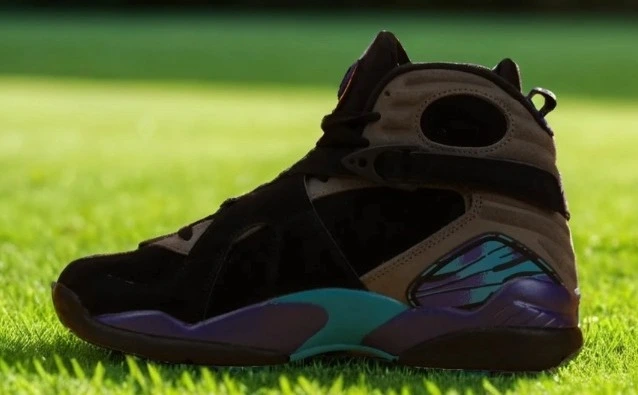
Now the 8s are a bit different thanks to their inner bootie and the crossover straps. They naturally feel snug and secure, so I wouldn’t overthink the sizing.
I go true to size here, and it feels just right whether I strap them tight or wear them a bit loose. If you really want that ultra-snug fit, you can go down half a size, but most people will be happiest true to size.
Air Jordan 8 Winterized

The winterized version fits pretty much the same as the regular 8, though it feels a little bulkier because of the materials.
True to size works best, especially if you plan on wearing thicker socks. But if you want that close, fitted feel, you can go down half a size and still be fine.
Air Jordan 9
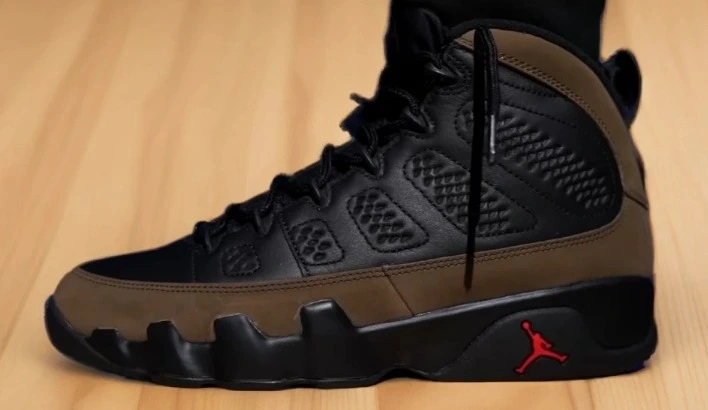
The Air Jordan 9 can be tricky. On paper, they fit true to size, but in practice, that inner sleeve and the way it’s cut near the toe can make them uncomfortable, especially around the pinky toe.
Every time I’ve worn a pair, I could feel that coarse nylon rubbing the side of my foot, and it’s not fun.
If you’ve got normal or wide feet, I honestly recommend going up half a size to give your pinky toe a bit of room.
It won’t completely fix the issue, but it definitely helps. If you’ve got narrow feet, then true to size should be fine.
Air Jordan 10

The Jordan 10 fits a little long in my experience.
I went down half a size, and that gave me the perfect one-to-one fit. If you’ve got narrow or normal-width feet, you’ll probably want to do the same.
Wide footers, though, should stay true to size. It’s a comfortable shoe overall, especially after it breaks in a bit, but getting the right length makes a big difference.
Air Jordan 11

The Jordan 11 is one of the best-fitting Jordans overall.
I always go true to size here, and they fit great, especially the midtops. They feel snug in a good way, not tight, and they really hold your foot in place.
If you’ve got wide feet, you might want to go up half a size since they can feel a little narrow around the forefoot at first.
They do soften up once you break them in, so don’t worry too much if they feel stiff out of the box.
Air Jordan 11 Low

The lows fit just like the mids. I always go true to size and they’re spot-on. Unless Jordan drastically changes the upper materials, the sizing stays consistent across colorways. So whatever size you wear in the regular 11s, go with that in the lows and you’ll be fine.
Air Jordan 12
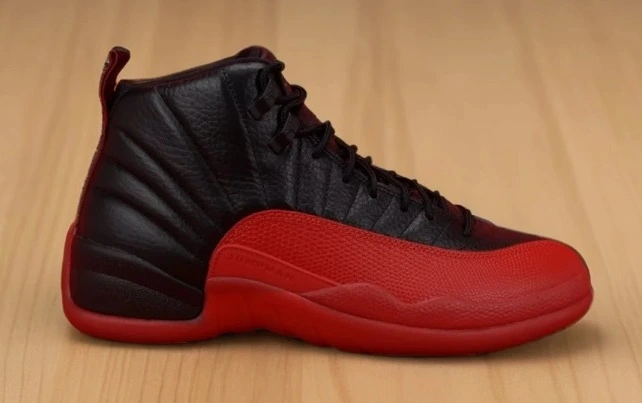
The Air Jordan 12 fits true to size. Whatever you normally wear in Jordans, that’s what I’d stick with.
They’re built pretty solid, so the leather can feel stiff at first, but once you break them in, they start to mold nicely to your foot.
If you’ve got narrow feet or you just prefer a super snug one-to-one feel, you can go down half a size. For most people, though, true to size is the sweet spot. That’s what I go with and it works best for me.
Air Jordan 13
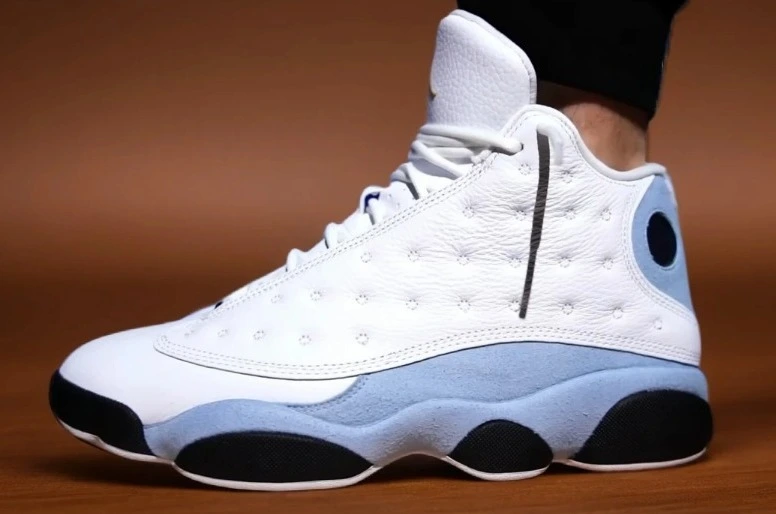
The Jordan 13 also runs true to size. The updated toe box feels great and gives the shoe a better overall shape.
If you just want to wear them casually, true to size is perfect. If you plan to play basketball in them and want a more locked-in fit, you can go down half a size once you’re ready to break them in.
The leather softens up over time, and once that happens, they feel amazing on foot.
Air Jordan 14
The 14 fits true to size, too, but here’s the catch: the back of the shoe can really dig into your Achilles when they’re new.
It takes a bit of breaking in before they feel comfortable. If you don’t want to deal with that, these might not be for you.
Otherwise, stick with your true size, and you’ll be fine once the materials start to soften.
Air Jordan 14 Ferrari

Same story here. The Ferrari version fits true to size and feels tight around the heel at first. That sculpted back pushes into your Achilles and can make your toes slide forward a bit.
Some people go up half a size to avoid that, but I think once they break in, true to size ends up feeling the best.
Air Jordan 17 Low & 17 Low UNC

Both versions fit true to size if you’re wearing them casually. The squared-off toe box makes them roomy enough, but if you plan to play in them and want a closer, more performance-oriented fit, I’d suggest going down half a size.
The UNC version has that same squared toe shape as the Jordan 16 and 18, so it’s consistent across the line.
Air Jordan 38

The Air Jordan 38 fits true to size. They might look small when you pull them out of the box, kind of like the Air Jordan 34, but once you slip them on, they fit perfectly one to one.
I went with my regular size and I think they feel great right out of the box. If you already know your size in other recent Jordans, stick with it.
Air Jordan 38 Low
This one’s a bit tricky. I usually wear a size 9 in almost everything, but the 38 Low runs longer than the mid. I don’t know what changed between the two, but the fit doesn’t feel quite the same.
I’d say most people should go down half a size unless you have wide feet or you wear an ankle brace that adds some bulk. In that case, true to size might work better for you.
Air Jordan 39
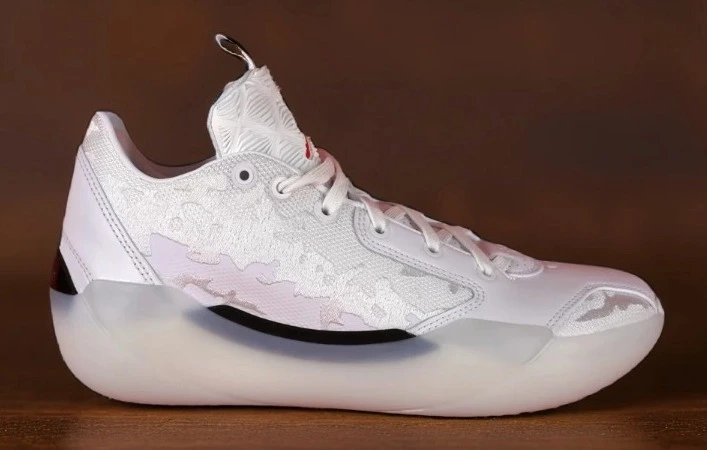
The Air Jordan 39 fits true to size. They feel perfect overall, snug but not tight, and the materials break in really well.
If you’ve got wide feet, I’d still try them on in-store if you can, just to be safe. The materials are flexible enough to accommodate most widths, but everyone’s foot shape is different.
They can stretch a little with wear, so you might find yourself re-tightening the laces after a few runs, but nothing major. True to size works for most people.
Air Jordan 40
Sizing on the Air Jordan 40 can be tricky. They run snug in the toe box and around the forefoot, especially before you break them in.
When you first try them on, make sure to loosen the laces completely and pull the tongue up to avoid pressure where the toe cap meets the stitched section. That small adjustment makes a big difference.
If you’re just wearing them casually, or you tend to wear thicker socks, I’d suggest going up half a size.
If you’re planning to play in them and like a snug one-to-one fit, true to size will work.
Personally, I would’ve preferred going up half a size. The pair I had felt tight in the front, and once my feet swelled up, the heel started pressing into my Achilles.
The lockdown was great, but a little too much of a good thing. So if you can try them on in-store, do it. If not, and you’re unsure, I’d say go up half a size to stay on the safe side.
Air Jordan Size Chart
| Men's US | Women's US | UK | EU | Inches | CM |
|---|---|---|---|---|---|
| 3.5 | 5 | 3 | 35.5 | 8 1/2 | 21.6 |
| 4 | 5.5 | 3.5 | 36 | 8 2/3 | 22 |
| 4.5 | 6 | 4 | 36.5 | 8 4/5 | 22.4 |
| 5 | 6.5 | 4.5 | 37.5 | 9 | 22.9 |
| 5.5 | 7 | 5 | 38 | 9 1/5 | 23.3 |
| 6 | 7.5 | 5.5 | 38.5 | 9 1/3 | 23.7 |
| 6.5 | 8 | 6 | 39 | 9 1/2 | 24.1 |
| 7 | 8.5 | 6 | 40 | 9 2/3 | 24.5 |
| 7.5 | 9 | 6.5 | 40.5 | 9 4/5 | 25 |
| 8 | 9.5 | 7 | 41 | 10 | 25.4 |
| 8.5 | 10 | 7.5 | 42 | 10 1/5 | 25.8 |
| 9 | 10.5 | 8 | 42.5 | 10 1/3 | 26.2 |
| 9.5 | 11 | 8.5 | 43 | 10 1/2 | 26.7 |
| 10 | 11.5 | 9 | 44 | 10 2/3 | 27.1 |
| 10.5 | 12 | 9.5 | 44.5 | 10 4/5 | 27.5 |
| 11 | 12.5 | 10 | 45 | 11 | 27.9 |
| 11.5 | 13 | 10.5 | 45.5 | 11 1/5 | 28.3 |
| 12 | 13.5 | 11 | 46 | 11 1/3 | 28.8 |
| 12.5 | 14 | 11.5 | 47 | 11 1/2 | 29.2 |
| 13 | 14.5 | 12 | 47.5 | 11 2/3 | 29.6 |
| 13.5 | 15 | 12.5 | 48 | 11 4/5 | 30 |
| 14 | 15.5 | 13 | 48.5 | 12 | 30.5 |
| 14.5 | 16 | 13.5 | 49 | 12 1/5 | 30.9 |
| 15 | 16.5 | 14 | 49.5 | 12 1/3 | 31.3 |
| 15.5 | 17 | 14.5 | 50 | 12 1/2 | 31.7 |
| 16 | 17.5 | 15 | 50.5 | 12 2/3 | 32.2 |
| 16.5 | 18 | 15.5 | 51 | 12 4/5 | 32.6 |
| 17 | 18.5 | 16 | 51.5 | 13 | 33 |
| 17.5 | 19 | 16.5 | 52 | 13 1/5 | 33.4 |
| 18 | 19.5 | 17 | 52.5 | 13 1/3 | 33.9 |
| 18.5 | 20 | 17.5 | 53 | 13 1/2 | 34.3 |
| 19 | 20.5 | 18 | 53.5 | 13 2/3 | 34.7 |
| 19.5 | 21 | 18.5 | 54 | 13 4/5 | 35.1 |
| 20 | 21.5 | 19 | 54.5 | 14 | 35.5 |
| 20.5 | 22 | 19.5 | 55 | 14 1/5 | 36 |
| 21 | 22.5 | 20 | 55.5 | 14 1/3 | 36.4 |
| 21.5 | 23 | 20.5 | 56 | 14 1/2 | 36.8 |
| 22 | 23.5 | 21 | 56.5 | 14 2/3 | 37.2 |
Big Kids (1Y – 7Y)
| Foot Length (in) | US | Foot Length (cm) | UK | EU |
|---|---|---|---|---|
| 7 15/16 | 1Y | 20.1 | 13.5 | 32 |
| 8 1/16 | 1.5Y | 20.5 | 1 | 33 |
| 8 4/16 | 2Y | 20.9 | 1.5 | 33.5 |
| 8 7/16 | 2.5Y | 21.4 | 2 | 34 |
| 8 9/16 | 3Y | 21.8 | 2.5 | 35 |
| 8 12/16 | 3.5Y | 22.2 | 3 | 35.5 |
| 8 13/16 | 4Y | 22.4 | 3.5 | 36 |
| 8 15/16 | 4.5Y | 22.7 | 4 | 36.5 |
| 9 2/16 | 5Y | 23.2 | 4.5 | 37 |
| 9 4/16 | 5.5Y | 23.5 | 5 | 38 |
| 9 6/16 | 6Y | 23.8 | 5.5 | 38.5 |
| 9 9/16 | 6.5Y | 24.3 | 6 | 39 |
| 9 11/16 | 7Y | 24.6 | 6 | 40 |
Little Kids (8C – 3Y)
| US | UK | EU | Foot Length (in) | Foot Length (cm) |
|---|---|---|---|---|
| 8C | 7.5 | 25 | 5 15/16 | 15 |
| 9C | 8.5 | 26 | 6 4/16 | 15.9 |
| 10C | 9.5 | 27 | 6 9/16 | 16.7 |
| 10.5C | 10 | 27.5 | 6 12/16 | 17.2 |
| 11C | 10.5 | 28 | 6 15/16 | 17.6 |
| 11.5C | 11 | 28.5 | 7 1/16 | 18 |
| 12C | 11.5 | 29.5 | 7 4/16 | 18.4 |
| 12.5C | 12 | 30 | 7 7/16 | 18.8 |
| 13C | 12.5 | 31 | 7 9/16 | 19.3 |
| 13.5C | 13 | 31.5 | 7 12/16 | 19.7 |
| 1Y | 13.5 | 32 | 7 15/16 | 20.1 |
| 1.5Y | 1 | 33 | 8 1/16 | 20.5 |
| 2Y | 1.5 | 33.5 | 8 4/16 | 20.9 |
| 2.5Y | 2 | 34 | 8 7/16 | 21.4 |
| 3Y | 2.5 | 35 | 8 9/16 | 21.8 |
Babies & Toddlers (1C – 10C)
| Age (months) | US | UK | EU | Foot Length (in) | Foot Length (cm) |
|---|---|---|---|---|---|
| 3 | 1C | 0.5 | 16 | 3 9/16 | 9.1 |
| 6 | 2C | 1.5 | 17 | 3 15/16 | 10 |
| 9 | 3C | 2.5 | 18.5 | 4 4/16 | 10.8 |
| 12 | 4C | 3.5 | 19.5 | 4 9/16 | 11.6 |
| 18 | 5C | 4.5 | 21 | 4 15/16 | 12.5 |
| 24 | 6C | 5.5 | 22 | 5 4/16 | 13.3 |
| 36 | 7C | 6.5 | 23.5 | 5 9/16 | 14.2 |
| 8C | 7.5 | 25 | 5 15/16 | 15 | |
| 9C | 8.5 | 26 | 6 4/16 | 15.9 | |
| 10C | 9.5 | 27 | 6 9/16 | 16.7 |
How to Measure Your Feet for Air Jordans
Let’s be real, the best way to get your Air Jordan size right is to try the exact model on your feet. No chart, no calculator, no trick beats putting them on and walking around for a minute.
Every model has its own shape, padding, and materials, so what feels perfect in one Jordan might feel snug or roomy in another.
But if you can’t try them on (and that’s usually the case when buying online), here’s how to get your size as close to perfect as possible.
1. Get Measured by a Pro

If there’s a sneaker store nearby, especially a Nike store or any athletic shop with a Brannock device, start there.
Ask them to measure both of your feet. You’d be surprised how many people have one foot slightly longer or wider than the other. Always go with the larger measurement.
A pro fitting gives you your exact length and width in US, UK, and EU sizing. Most Air Jordans are made around a “D” width (standard for men), so if you’re wider than that, you’ll want to pay attention to models known for running narrow.
2. Use a Brannock Device (If You Have One)

If you’ve got a Brannock device at home, use it on a hard floor while standing. Make sure you measure both length and width. Write those numbers down because that’s going to be your true foot size.
Remember: Brannock size is your true size, not necessarily the size you buy in every shoe. For Jordans, most people end up wearing their Brannock size or going down half a size, depending on the model and how they like the fit.
Here’s how to measure your feet with a Brannock device:

3. Measure at Home (No Tools Needed)
If you don’t have access to a Brannock, you can still get close enough with just paper, a pen, and a ruler:
- Put a piece of paper flat against a wall.
- Stand on it with your heel lightly touching the wall.
- Make sure you’re wearing socks similar to what you’ll wear with your Jordans.
- Mark the tip of your longest toe.
- Measure the distance in centimeters or inches.
- That number gives you your foot length, which you can compare to Nike’s size chart.
Important: Always measure both feet and go with the longer one.
4. Measure at the Right Time
Feet aren’t the same size all day. They swell slightly as the day goes on, especially if you’ve been walking or standing.
That’s why the best time to measure is in the late afternoon or evening. That’s when your feet are at their largest.
5. Stand When Measuring
Don’t measure your feet while sitting down. When you stand, your foot spreads out a bit from your body weight, and that’s the real shape your shoe will need to fit.
6. Consider Width and Socks
Air Jordans are built on a standard-width last, so if you’ve got wide feet, some models (like the Air Jordan 1 High OG or the Air Jordan 4) might feel tight around the midfoot.
You can sometimes fix that by loosening the laces, swapping to thinner socks, or even using a shoe stretcher for a bit of extra room.
On the other hand, if your feet are narrow, you might feel a little extra volume inside. In that case, thicker socks or aftermarket insoles can make a big difference.
If you’re not sure whether your feet are considered narrow, regular, or wide, check out my sneaker width chart. It explains everything about width sizing, how to measure your feet properly, and what to look for when choosing the right width in sneakers like Air Jordans.
7. Don’t Forget Break-In and Materials
Leather Jordans (like most 1s) will soften and stretch slightly after a few wears, especially in the toe box. Knit or mesh uppers (like the newer Air Jordans) are more forgiving from day one but don’t change shape much over time.
So, if your pair feels just a touch snug at first, that’s usually a good sign. It means it’ll break in perfectly. If it’s painfully tight, though, that’s not going away, so go half a size up.
8. Insider Tips for Sneaker Fit
- Always lace them up fully when testing the fit.
- Walk around for a few minutes.
- Your heel should stay locked in place without lifting.
- You should have about a thumb’s width of space in front of your toes.
- If your toes touch the end, it’s too small.
- If you can slide your foot easily, it’s too big.
- Different Jordan models have slightly different lasts, so you might need to adjust half a size between models.
Once you’ve measured properly, you’ll have a much better idea of what to order. Still, no matter how precise you get, the safest bet is to try on the exact model when you can, especially if you’re jumping between older retro Jordans and the newer performance lines.
Final Thoughts
When it comes down to it, Nike Air Jordan sizing really matters if you want your sneakers to feel comfortable right out of the box.
Some models run a little snug, others have extra room, and knowing the differences can save you a lot of trial and error.
That’s why I always recommend checking a Nike Air Jordan size chart before you buy, especially if you’re trying a model for the first time or ordering online.
At the end of the day, getting the right fit is all about understanding the shoe, your foot, and sometimes even the type of socks you wear.
I’d love to hear from you! Have you had any experiences with Nike Air Jordan sizing that surprised you?
Did a certain model run bigger or smaller than you expected?
Drop a comment and share your thoughts.